
Iran must rebuild trust with the global tourism market, the Head of the Iranian Tour Operators said on Sunday. The level of Iran’s health security and vaccination against coronavirus should be advertised internationally to gain further trust from the global tourism market, Ebrahim Pourfaraj said. The health and safety level in Iran is a concern for foreign tourists, he noted, ISNA reported. It is the responsibility of the Ministry of Foreign Affairs, embassies, economic and cultural attaches, and ministries of health and tourism to inform the world about Iran’s [great achievements in] public vaccinations, the official added. During the pandemic, Iran has maintained contact with global tourism markets and companies that worked with the country in the past, especially since virtual communication and meetings have been held, he mentioned. “Following the resumption of the tourist visa, visitors from Russia and France have traveled to Iran and we are currently expecting a smaller number of tourists in Iran due to the current situation in the world,” he explained. There is, however, speculation that in the spring of 2022, the next high season of travel to Iran, the number of tourists and trips will increase, he added. In January, the official announced that international tourism flow to Iran will return to normal in 2022. Although there are requests for traveling to Iran in the current year (2021), most travel agencies and tour operators believe that the flow will go back to normal in the next year, he said. Beginning mass vaccination against the coronavirus will provide better and safe conditions for international travels in 2022, he added. Last November, the World Tourism Organization announced that international tourist arrivals to Iran plunged 72% during the first eight months of 2020 when compared to 2019, highlighting the severe impact of COVID-19 as the main factor. Some experts believe Iran is still somehow “unknown” for many potential travelers due to Western “media war”. The ancient land is potentially a booming destination for travelers seeking cultural attractions, breathtaking sceneries, and numerous UNESCO-registered sites. Under the 2025 Tourism Vision Plan, Iran aims to increase the number of tourist arrivals from 4.8 million in 2014 to 20 million in 2025.
Create: Nov 15, 2021 Edit: Nov 15, 2021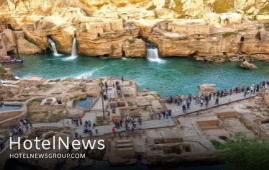
The UNESCO-registered Shushtar Historical Hydraulic System has been closed to visitors amid safety concerns after its western side was announced to be “unstable”. “Shushtar Historical Hydraulic System was closed to the public until further notice due to the unstable conditions of the western wall,” Mehr reported on Sunday. “Cultural heritage experts have warned for years about the instability of this part of the World Heritage,” the report said. Earlier in October, a local official announced that leakage of the site, which is known globally as a masterpiece of creative genius, is an immediate concern and needs to be restored. “To prevent water leakage in the historical structure, which could result in its destruction, short-term measures are taken,” the official said, Mehr reported. Studies and research are being conducted and meetings with consulting engineers are underway to find a way to cause the least damage to this ensemble, the official added. The ancient hydraulic system comprises bridges, weirs, tunnels, canals, and a series of ancient watermills powered by human-made waterfalls. It is named after an ancient city of the same name with its history dating back to the time of Darius the Great, the Achaemenid king. Inscribed on the UNESCO World Heritage list in 2009, the Shushtar Historical Hydraulic System may testify to the heritage and the synthesis of earlier Elamite and Mesopotamian knowhow. According to UNESCO, the ensemble was probably influenced by the Petra dam and tunnel and by Roman civil engineering. The property is as rich in its diversity of civil engineering structures and its constructions as in the diversity of its uses (urban water supply, mills, irrigation, river transport, and defensive system). The Shushtar Historical Hydraulic System testifies to the heritage and the synthesis of earlier Elamite and Mesopotamian knowhow; it was probably influenced by the Petra dam and tunnel and by Roman civil engineering. “The hydraulic system has been considered a Wonder of the World not only by the Persians but also by the Arab-Muslims at the peak of their civilization,” according to the UN cultural body. Furthermore, one of its main canals is a veritable artificial watercourse that made possible the construction of a new town and the irrigation of a vast plain, at the time semi-desert. UNESCO says that the Shushtar Historical Hydraulic System demonstrates outstanding universal value as in its present form, it dates from the 3rd century CE, probably on older bases from the 5th century BC. It is complete, with numerous functions, and large-scale, making it exceptional.
Create: Nov 15, 2021 Edit: Nov 15, 2021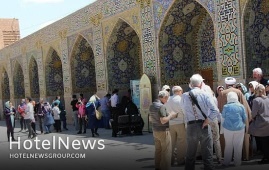
A number of Russian travel agents and tour operators have recently arrived in Iran for a week-long familiarization tour, Mehr reported on Friday. The group, which entered the Islamic Republic on Thursday through Imam Khomeini International Airport, was scheduled to travel earlier this year following the implementation of Iran-Russia visa waiver for group tours; however, because of coronavirus restrictions, they were forced to postpone the journey, the report added. Supported by Mahan Airlines, the group will tour the southern cities of Kerman, Mahan, Shiraz, and central city of Isfahan as well as the UNESCO-registered Lut Desert in the barren heartland of Iran. The tour will be held observing strict health protocols and social distancing rules. Earlier in June, the former Iranian tourism minister Ali-Asghar Mounesan finalized work on a bilateral visa-free agreement for tourist groups with Russia. In 2017, former Iranian President Hassan Rouhani and his Russian counterpart Vladimir Putin inked a visa-free agreement for tourist groups. A joint technical committee has been developing an action plan for the previously agreed visa-free travel arrangements since then, in order to put the agreement into effect. However, the outbreak of the coronavirus put a halt to the agreement. Based on the 2017 agreement tour groups of 5 to 50 people heading to [easternmost parts of] Russia from Iran or vice versa are granted a visa-free stay of up to 15 days. Back in May, Mostafa Sarvari, who presides over the tourism marketing and advertising office of the Iranian Tour Operators Association, announced many Russian tourists are eager to travel to Iran, recounting his Russian counterparts. “Many [potential] Russian travelers are motivated to visit novel and lesser-known destinations such as Iran that could be a safe and attractive destination,” he said. “According to Russian tourism experts, the feedback from Russian tourists who have traveled to Iran has been very positive, and its reflection, especially on social media, has caused a great deal of enthusiasm and interest.” According to Ebrahim Pourfaraj, who heads the Iranian Tour Operators Association, rounds of negotiations have been held between Iranian tour operators, travel marketers, and their Russian counterparts. “We’ve been commenced talks with some Russian travel agents to put Iranian destinations on their itineraries…. And the Iranian Tour Operators Association has also entered negotiations with Russian unions for outbound tours to attract more travelers from Russia. Pourfaraj says the majority of potential Russian travelers are unaware of the vast tourist attractions that exist in every corner of Iran. “The fact is that Iran’s political and economic relations with Russia are considered as good, but this has nothing to do with attracting tourists because it is directly connected with the Russian people. It is the Russian people who must choose Iran as their destination.” Maya Lomidze, executive director of the Association of Tour Operators of Russia, had told Sputnik that the visa agreement may significantly surge the tourist flows between the two countries, just like it happened when a similar deal was signed between Russia and China. The flow of Iranian tourists to Russia increased by 50-70 percent following the operation of direct flights that connect Iran to St. Petersburg, Moscow, and Sochi, she said. Iran is taking proactive measures in line with the long-term goal of 20 million tourists by 2025.
Create: Nov 9, 2021 Edit: Nov 9, 2021
Home to one of the world’s oldest continuous major civilizations, with historical and urban settlements dating back to 7000 BC, Iran seeks to attract more foreign travelers, and in particular, vacationers from China. Iran’s deputy tourism minister on Wednesday stressed the need for all-inclusive fault detection, and identification of effective factors to expand tourism ties with China in a meeting with travel experts from the state-run institutes and the private sector. We should pay attention to the Chinese market in a more pragmatic approach,” Ali-Asghar Shalbafian said in the follow-up session held to formulate new strategies to expand tourism cooperation between the two ancient countries. So far, steps have been taken to examine the Chinese tourism market, but today the (essential) need is to implement executive measures based on [our] fault detection and macro planning,” the official noted. Insignificant numbers of Chinese restaurants, Chinese-language guides, or even inappropriate lodging facilities are deemed to be among the main reasons why Chinese arrivals in Iran fall short of expectations. Some experts believe that part of this failure comes from inside Iran because Chinese restaurants are scanty across the country while the cuisine is of high importance for the majority of the Chinese people. Moreover, Chinese travelers need fluent Chinese-language tour guides whose numbers are limited in the Islamic Republic. Last year, Tehran’s ex-ambassador to Beijing said Iran was seeking to become a tourist destination for millions of potential travelers from China as the two countries are working on a 25-year comprehensive cooperation plan that includes boosting relations in the field of tourism. Speaking in the TV program, Mehdi Safari reminded some 200 million Chinese tourists to visit different countries annually, adding “according to this agreement Iran will become one of the tourist destinations for Chinese travelers so that Iran can attract one to two million Chinese tourists to the country.” This will create a transformation in Iran’s tourism industry and will create jobs and a large market for the handicrafts industry of the country,” he expanded. In 2019, the Islamic Republic waived the visa requirement for Chinese nationals willing to visit the country. The decision was made to attract more foreign tourists to the country; however, it was a unilateral measure, because Iranian tourists visiting China still need visas. Under the 2025 Tourism Vision Plan, Iran is expecting to increase the number of tourism arrivals from 4.8 million in 2014 to 20 million by 2025.
Create: Nov 9, 2021 Edit: Nov 9, 2021
Three Qajar-era (1789-1925) caravanserais in Tabas, eastern South Khorasan province, have recently been demarcated help their legal boundaries and properties, a local tourism official has said. “New boundaries have been defined for Khan, Chehel Payeh, and Deh-e Mohammad caravanserais in a bid to curb illegal constructions within their boundaries,” Parisa Jamshidi announced on Sunday. The caravanserais, which are among the candidates for a collective inclusion in UNESCO’S cultural heritage list, has been recently restored, the official noted. Over 70 billion rials ($1.7 million at the official exchange rate of 42,000 rials per dollar) has been invested in the restoration projects of the historical inns so far, she added. Caravansary (also Caravanserai or Caravansaray) is a building that served as the inn of the Orient, providing accommodation for commercial, pilgrim, postal, and especially official travelers. According to Encyclopedia Iranica, from the number of surviving caravansaries and their sizes, it is clear that in Safavid and Qajar times there was a state architectural department that was specifically concerned with the construction of caravansaries and stations on the overland routes. Furthermore, in the cities, several caravansaries were erected as lodging houses, depots, and commercial offices in the vicinity of the bazaars. A typical caravansary consists of a square or rectangular plan centered around a courtyard with only one entrance and arrangements for defense if necessary. Whether fortified or not, it at least provided security against beasts of prey and attacks by brigands. Iran’s earliest caravanserais were built during the Achaemenid era (550 -330 BC). Centuries later, when Shah Abbas I assumed power from 1588 – to 1629, he ordered the construction of network caravanserais across the country. Such roadside inns were originally built in various epochs along ancient caravan routes in the Muslim world to shelter people, their goods, and animals. The former Silk Roads may be the most famous example dotted by caravanserais.
Create: Nov 3, 2021 Edit: Nov 3, 2021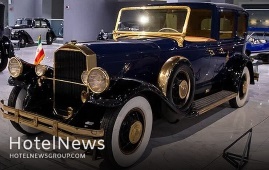
Following years of restoration and renovation, Iran Historical Car Museum in western Tehran has reopened its doors to the public, featuring a magnificent collection of rare classic, vintage, sports cars, carriages, and motorcycles.Highlights of the museum include a gold-plated limousine, the world’s only Panther-Laser car produced, a Silver Ghost Rolls-Royce once owned by the Qajar King, Ahmand Shah (r. 1909 – 1925), as well as a royal carriage belonging to Nasereddin Shah of Qajar.In an interview with the Tehran Times on Sunday, the director of the museum Mohammad Fa’al, said: “The 1922 Rolls-Royce, a Morris Oxford Bullnose, and a Fiat Tipo 519 constitute the three oldest cars of the collection.”“The building of the museum underwent restorations as of 2005 as you can see the images of the restoration of the building and cars have been installed on the walls of the museum. Moreover, we refurbished a dozen other cars from our treasury and added them to the newly-opened museum.”“The museum has four main halls, the first of which bears the oldest vehicles of the collection, amongst them the Rolls-Royce Silver Ghost that was belonging to Ahmad Shah Qajar,” he said. Hall 2 is dedicated to American and Mercedes-Benz vehicles, and Hall 3 is devoted to the official and ceremonial cars, which include various models of Rolls-Royces and Mercedes. Hall 4 is also dedicated to sports and super sports cars. In response to a question about the number of vehicles, the director said: “There are currently 102 cars in the treasury in addition to 55 cars that are currently on display.” “Of course, what you now see in here is not all our cars, and we have a treasury that acts as a support for the museum, and it has cars that are being renovated over time and replaced with these existing cars in order to preserve the charm of the museum.” The museum owns the largest collection of Mercedes-Benz 600 in the world. “We have the largest collection of Mercedes-Benz 600 in the world with 21 units. The Mercedes-Benz Museum itself has three units of the 600 model…. the Mercedes-Benz 600 itself is designed and built with different rooms and its function is only for ceremonies and this model has different rooms some having hardtop or custom-made sunroofs,” the director of the museum explained. He said that the museum owns all models of Mercedes-Benz 600, which is very unique. “Moreover, we have all models of Mercedes-Benz 600 that have been produced by the German company; four of which are on display here in the museum, and 17 are being kept inside the treasury.” Furthermore, Fa’al added 21 classic Rolls-Royces are being kept in the museum and its treasure trove. “Home to 21 [classic] Rolls-Royces, Iran Historical Car Museum is the second-largest treasure trove of those vehicles after the Rolls-Royce Museum.” Talking about the values of cars he explained, “all these cars are valuable and it is impossible to say which one is better. We can say which one is more beautiful and which has a more attractive design, but we cannot say which is more valuable.” “However, the classification of cars in terms of value depends on several factors: one is the age of the car, the other is its manufacturer brand and design technology. And there are decorative items used in cars. For instance, a car in which is gold plated and is decorated with jewelry is obviously more valuable than an ordinary one….” Responding to a question concerning restoration, Fa’al said all the processes of rebuilding cars are fully documented and all phases are photographed and evidence is available. The age of the classic cars According to Brinatica, the decade 1925–35 was notable not only for the appearance of many new small automobiles but also for the building of many ultra-large ones. The years from 1925 to 1948 are cited by collectors of automobiles as the “classic years,” a period that saw the rise of the luxurious fast motorcar to a peak it seems unlikely to reach again. The first name in this field was Rolls-Royce Ltd., founded in 1906. Most Rolls-Royce chassis are designed for limousine and large sedan bodies, but the firm once made a comparatively light car (called the Twenty), and it has throughout its history produced fast models in addition to its regular line—e.g., after World War II, the Continental, built under the Bentley Motors Ltd. label. Other motorcars of this type included the Hispano-Suiza of Spain and France; the Bugatti, Delage, Delahaye, Hotchkiss, Talbot (Darracq), and Voisin of France; the Duesenberg, Cadillac, Packard, and Pierce-Arrow of the United States; the Horch, Maybach, and Mercedes-Benz of Germany; the Belgian Minerva; and the Italian Isotta-Fraschini.
Create: Nov 3, 2021 Edit: Nov 3, 2021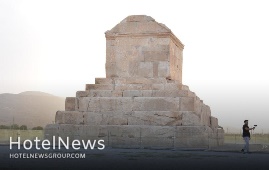
Iranian government has allocated a sum of 200 billion rials (about $4.7 million at the official exchange rate of 42,000 rials per dollar) to develop tourism infrastructure at the UNESCO-designated Pasargadae. A budget of 200 billion rials has been allocated to Pasargadae after President Ebrahim Raisi visited the Achaemenid site earlier in October, a senior tourism official, Javad Vahedi, said on Friday. The Pasargadae complex, as a magnificent World Heritage site, has a high tourism potential in the field of cultural and historical tourism, and we must plan to attract more tourists,” the official explained. Situated about 50 km north of Persepolis, Pasargadae was the first dynastic capital of the Achaemenid Empire, founded by Cyrus II the Great, in Pars, the homeland of the Persians, in the 6th century BC. Its palaces, gardens, and the mausoleum of Cyrus are outstanding examples of the first phase of royal Achaemenid art and architecture and exceptional testimonies of Persian civilization. The UNESCO World Heritage site is also home to a complex water supply system for the time that comprises cisterns, tunnels, underground canals, and ducts, which are locally known as qanats. It is believed that the development of qanats began about 2,500 or 3,000 years ago in Persia (Iran), and the technology spread eastward to Afghanistan and westward to Egypt. Although new qanats are seldom built today, many old qanats are still used in Iran and Afghanistan, chiefly for irrigation. The 160-ha archaeological site of Pasargadae presents some of the earliest manifestations of Persian art and architecture. It includes, among other monuments, the compact limestone tomb on the Morgab plain that once held Cyrus the Great’s gilded sarcophagus; Tall-e Takht (“Solomon’s Throne”), a great fortified platform built on a hill and later incorporated into a sprawling citadel with substantial mud-brick defenses; and the royal ensemble, which consists of several palaces originally located within a garden layout (the so-called “Four Gardens”). Pasargadae became a prototype for the Persian Garden concept of four quadrants formally divided by waterways or pathways, its architecture characterized by refined details and slender verticality. Pasargadae stands as an exceptional witness to the Achaemenid civilization. The vast Achaemenid Empire, which extended from the eastern Mediterranean and Egypt to the Hindus River in India, is considered the first empire to be characterized by a respect for the cultural diversity of its peoples. This respect was reflected in the royal Achaemenid architecture, which became a synthesized representation of the empire’s different cultures. Pasargadae represents the first phase of this development into a specifically Persian architecture which later found its full expression in the city of Persepolis.
Create: Oct 31, 2021 Edit: Oct 31, 2021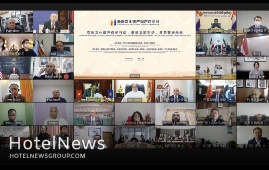
The Islamic Republic of Iran is prepared to offer expertise for the conservation of historical monuments and relics in Asia. On Thursday, Hadi Ahmadi-Roueeni, a senior official with the Ministry of Cultural Heritage, Tourism and Handicrafts announced the country’s readiness to share experience for the preservation of historical monuments with Asian countries, Iran Press reported. Establishing a fund to protect endangered cultural heritage in Asia and border-free associations of professionals in Asia as well as sharing experiences among the continental expert community would improve the conservation of the legacies, the official explained. He also called on all countries to join hands in various realms of political, academic, and professional levels to help restore the endangered historical legacies in countries suffering such problems as war, unrest, and occupation. Ahmadi-Roueeni made the remarks on Thursday on the second day of the first forum of “Asian Dialogue for Cultural Heritage Conservation” which was virtually held in China. The biggest Asian cultural heritage event is hosted by China on October 27 and 28 with the slogan of “Promoting Dialogue among Civilizations and Shaping the Future of the Asian”. According to organizers, the dialogue aims to move forward with the Asian Initiative for Cultural Heritage Conservation and open a new chapter for exchanges and mutual learning among Asian civilizations. Senior officials from 36 Asian countries and five international organizations including UNESCO, the International Council of Museums, and the International Council on Monuments and Sites participated in the conference in the form of an online meeting, Global Times reported. At the conference, the Asian Alliance for Cultural Heritage Conservation was jointly initiated by 10 Asian countries – China, Iran, Armenia, Cambodia, the Democratic People's Republic of Korea, Kyrgyzstan, Pakistan, Syria, the United Arab Emirates, and Yemen – was officially established. According to data from the UNESCO World Heritage Center, about 50 percent of the world’s endangered world cultural heritage sites are located in Asia. “Preserving our heritage is not a luxury – it is a prerequisite for ensuring that future generations can inherit an identity, a history, a voice, and a sense of ownership of their past and future,” said Xing Qu, deputy director-general of UNESCO. Xing expressed thanks to China for organizing the event and for helping to address the challenges facing cultural heritage. The ceremony also set up the Asian Fund for Cultural Heritage Conservation as a special fund to support programs and projects in conservation, research, and joint archaeology concerning cultural heritage conservation in Asia.
Create: Oct 31, 2021 Edit: Oct 31, 2021
The Islamic Republic of Iran should benefit from World Cup as a considerable opportunity to promote its distinctive travel attractions, the deputy tourism minister has said. "With the World Cup being held in a neighboring country, Iran can benefit from this important event, which if carefully planned, can bring significant wins for various sectors, especially the tourism industry in the country," CHTN quoted Ali-Asghar Shalbafian as saying on Wednesday. The geographical position of Iran and its unique tourist attractions make it a potential destination for the World Cup spectators, the official added. Therefore, proper policy-making and management in collaboration with the private sector can pave the way for the widespread use of this event, he noted. Increasing the number of flights between Iran and Qatar during the event, which will be held from November 21 to December 18, 2022, as well as showcasing and introducing distinctive tourist attractions of the country to the spectators at this event are on the agenda of the tourism ministry, he explained. Back in September, Cultural Heritage, Tourism, and Handicrafts Minister Ezzatollah Zarghami announced the issuance of tourist visas and the flow of foreign tourists to Iran would resume as per President Ebrahim Raisi’s order following 19 months of suspension. However, now that the tourist visas are once again being issued to cultivate good grounds of hope for travel insiders. Months of steep recession has taken its toll. Many travel insiders, hoteliers, and tour operators have faced big dilemmas such as bankruptcy, unemployment, debts, and the prospects of not being competitive on the international level. Meanwhile, the number of people testing positive for COVID-19 has continued to fall in the Islamic Republic, curbing a stubborn fifth wave of the pandemic, which has seen daily mortalities of up to 700 in recent weeks. As of September 22, the figure dropped to below 300 as the government has devoted a great deal of effort to vaccinate citizens against the nasty virus. Some experts believe Iran is still somehow “unknown” for many potential travelers due to Western “media war”. Several estimates have been released so far on the extent of the tourism-related losses incurred by the pandemic. Only months into the outbreak, Zarghami’s predecessor, Ali-Asghar Mounesan, lamented that the number of foreign travelers to Iran was drastically plunged due to the pandemic. Tourism of the country was growing before the corona [outbreak], its revenues reached $11.7 billion in 2019, which accounted for 2.8% of GDP, nearing the average share of tourism in the world GDP, which was 3.2 percent,” Mounesan said. He added 8.7 million foreign nationals visited Iran during the [Iranian] year (1398), adding that Iran was ranked as the second fastest-growing country in tourism based on data compiled by the World Tourism Organization. Experts expect Iran to achieve a tourism boom after coronavirus contained, believing its impact would be temporary and short-lived for a country that ranked the third fastest-growing tourism destination in 2019. The Islamic Republic expects to reap a bonanza from its numerous tourist spots such as bazaars, museums, mosques, bridges, bathhouses, madrasas, mausoleums, churches, towers, and mansions, of which 26 are inscribed on the UNESCO World Heritage list. Under the 2025 Tourism Vision Plan, Iran aims to increase the number of tourist arrivals from 4.8 million in 2014 to 20 million in 2025.
Create: Oct 31, 2021 Edit: Oct 31, 2021
A selection of craftspeople, travel insiders, and exhibitors from Sistan-Baluchestan are getting prepared to promote the southeastern Iranian province at the Expo 2020 Dubai, which is currently underway in the UAE. "[A selection of exhibitors from] Sistan-Baluchestan province will be attending the expo in Dubai, in [the month of] Bahman to present a variety of programs," the provincial tourism chief Alireza Jalalzaei said on Tuesday. A wide range of Sistan-Baluchestan's ancient handicrafts, live performances, and workshops, and introductions to cultural and natural destinations, and the archaeological sites is expected to take the center stage at the Iran pavilion during the event, the official explained. Visitors to the pavilion are offered to discover epitomes of the ancient land in terms of rituals, handicrafts, cultural heritage, and travel destinations. It also reveals more about medical tourism, novel startups, and off-the-beaten tracks. Many countries and companies are also looking to the expo - the first major global event open to visitors since the coronavirus pandemic - to boost trade and investment. According to organizers, the Expo, an exhibition of culture, technology, and architecture under the banner “Connecting Minds and Creating the Future”, is expected to be a demonstration of ingenuity, and a place where global challenges such as climate change, conflict, and economic growth can be addressed together. Iran expects to reap a bonanza from its numerous tourist spots such as bazaars, museums, mosques, bridges, bathhouses, madrasas, mausoleums, churches, towers, and mansions, of which 26 are inscribed on the UNESCO World Heritage list. The collective province -- Sistan in the north and Baluchestan in the south -- accounts for one of the driest regions of Iran with a slight increase in rainfall from east to west, and an obvious rise in humidity in the coastal regions. In ancient times, the region was a crossword of the Indus Valley and the Babylonian civilizations. The province possesses special significance because of being located in a strategic and transit location, especially Chabahar which is the only ocean port in Iran and the best and easiest access route of the middle Asian countries to free waters. The vast province is home to several distinctive archaeological sites and natural attractions, including two UNESCO World Heritage sites, namely Shahr-e-Soukhteh (Burnt City) and Lut desert.
Create: Oct 31, 2021 Edit: Oct 31, 2021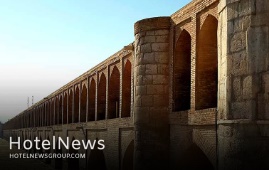
A selection of 200 “untold stories” about Isfahan is now available for you to re-discover the ancient city, which has long been nicknamed as “half the world”. Each story is narrated within a one-minute video clip in different languages to make culture lovers and avid travelers familiar with the off-the-beaten tracks, lesser-known destinations, souvenirs, foods, traditions, rituals, cultural heritage, handicrafts, and above all the hospitable people of Isfahan. Directed by Iranian globetrotter and researcher Majid Erfanian, the clips have been produced jointly by Isfahan Chamber of Commerce, Industries, Mines and Agriculture (ICCIMA), and the private company of Rah Abrisham Iranian Zamin. 100 of the videos, containing 100 fascinating stories, had already been uploaded to social media outlets, while the others were unveiled in an official ceremony hosted by the ICCIMA on Saturday evening. The event was attended by the deputy tourism minister Ali-Asghar Shalbafian, Isfahan governor-general Seyyed Reza Mortazavi, the mayor of Isfahan Ali Qasemzadeh, and Alireza Salarian, the head of Representative Office of Ministry of Foreign Affairs in Isfahan as well as a host of travel insiders, reporters, and journalists who discussed ways to jumpstart tourism. Erfanian stressed the need for greater public awareness about the cultural heritage of the ancient land, saying the “untold stories” are produced for that purpose. “Redefining destinations has rarely happened in the field of traveling [in the country], and now the city [of Isfahan] is a forerunner of such a trend to express its tourism brand in a new way,” he said. Talking about the clips, Erfanian said” “In these multi-language videos, we have tried to put the spotlight on inaccessible or lesser-known historical sites, foods, intangible heritage, people…. characters, craftsmen and figures who have played a role in shaping the identity of Isfahan.” “Sister cities of Isfahan, the diversity of religions, and intangible heritage are amongst other elements we have addressed in the videos,” he added. In an address to the unveiling ceremony, the deputy tourism minister used the context of modern architecture to discuss ways to highlight contemporary Isfahan shoulder to shoulder with its historical core. “We see in the videos that they mostly bring centuries-old architecture and culture into focus, however, we should consider casting a new light on the modern side of Isfahan as well.” “In the production of extra videos, newer ideas may be added to improve the quality of the work,” Shalbafian added. The governor-general of Isfahan reminded the attendees of the unique feature of stories and narratives, in general, to preserve cultural heritage for the coming generations. “In all over the world, paying attention to stories and narratives is of special importance for the development of tourism….. and we have many of such stories that have been forgotten in the course of history.” What you have done in this project is to revive such stories and distinct identities that if ignored, will lead to their disappearance, Mortazavi explained. Ali Karbasizadeh, a senior advisor to the ICCIMA, expressed the need for paying much more attention to the tourism industry, content production, training of all stakeholders and activists, conducting relevant studies, productive investments, tourism startups, and further cooperation with other provinces to develop the tourism paradigm of the country. Furthermore, Karbasizadeh discussed the advantage of adequate official holidays in Iran, saying the number of national holidays in Iran, which has a pivotal role in domestic tourism, is currently insufficient in comparison to many other countries. “If this issue is not addressed and solved, our efforts in other areas would not have desired results.” Salarian for his part noted that making one-minute videos of Isfahan is a good fit. “When we sent [some of the earliest] clips of the series to our embassies in various countries, they expressed a wish to have them translated into other languages as well….Now I see that this has happened.” “Even the municipality [of Isfahan] has produced a series of professional five-minute videos in ten languages that are well received by the audiences.” “Isfahan is one of the important destinations for the high-ranking Iranian officials and visiting officials from other countries. Therefore, it has a unique stance in the field of tourism that should be taken into account,” the senior diplomat explained. Finally, the mayor of Isfahan outlined the importance of storytelling for the time being and in various fields including tourism, saying: “Story [and storytelling] still works in the present day even in psychiatric discussions, story therapy is a growing concept.” “We are ready to expand cooperation and join hands with other activists in the realm of tourism because Isfahan has enormous potential to become a major destination for international travelers,” Qasemzadeh said. Half the world? Soaked in a rich history, Isfahan was once a crossroad of international trade and diplomacy in Iran and now it is one of Iran’s top tourist destinations for good reasons. It is filled with many architectural wonders such as unmatched Islamic buildings, bazaars, museums, Persian gardens, and tree-lined boulevards. It's a city for walking, getting lost in its mazing bazaars, dozing in beautiful gardens, and meeting people. Isfahan is renowned not only for the abundance of great historical bridges but also for its ‘life-giving river’, the Zayandeh-Rood, which has long bestowed the city an original beauty and fertility. Isfahan has long been nicknamed as Nesf-e-Jahan which is translated into “half the world”; meaning seeing it is relevant to see half the world. In its heyday, it was also one of the largest cities in the region with a population of nearly one million. The cool blue tiles of Isfahan's Islamic buildings, and the city's majestic bridges, contrast perfectly with the encircling hot, dry Iranian countryside. The huge Imam Square, best known as Naghsh-e Jahan Sq. (literary meaning “Image of the World”), is one of the largest in the world (500m by 160m), and a majestic example of town planning. Constructed in the early 17th century, the UNESCO-registered square is punctuated with the most interesting sights in Isfahan. It was laid out under the reign of the Safavid ruler, Shah Abbas the Great, to signal the importance of Isfahan as the capital of his powerful empire. It is hemmed on four sides by magnificent buildings: to the east, the Sheikh Lotfollah Mosque; to the west, the palace of Ali Qapu; to the north, the portico of Qeysarieh; and to the south, the eminent Imam Mosque. “The square was at the heart of the Safavid capital’s culture, economy, religion, social power, government, and politics. Its vast sandy esplanade was used for celebrations, promenades, and public executions, for playing polo and for assembling troops,” according to the UNESCO website. Right at the northern limit of the Imam Square, one will find “Qeysarieh Gate”, which leads to the unique and unforgettable “Grand Bazaar of Isfahan”. This vaulted marketplace is one of the largest and most labyrinthine bazaars in the country. Shops offering handicrafts, souvenirs, jewelry, silverware, traditional ceramics, and authentic Persian carpets. Modern Isfahan is now home to some heavy industry, including steel factories and a nuclear facility on its outskirts, however, its inner core wants to be preserved as a priceless gem. The city is also home to a gigantic, professional, and state-of-the-art healthcare city, which is a major destination in the realm of medical tourism. Unknown destination Even before the pandemic, Iran’s tourism was already grappling with some challenges, on top of those Western “media propaganda” aimed at scaring potential travelers away from the Islamic Republic. Some experts believe Iran is still somehow “unknown” for many potential travelers due to such a “media war”. They, however, consider bright prospects for the tourism sector of the country if it vigorously pursues comprehensive strategies to counter U.S.-led propaganda and strict sanctions, yet does its best to loosen tough travel regulations.
Create: Oct 26, 2021 Edit: Oct 27, 2021
The car museum of Iran was inaugurated on Saturday, October 23. A collection of 61 unique classical and historical vehicles dating back to Qajar (1789-1925) and Pahlavi (1925-1979) dynasties are on show at the museum on the Tehran-Karaj old road. Some 1.2 trillion rials (around $28 million) has been invested to build the museum measuring 11,000 square meters in area.
Create: Oct 25, 2021 Edit: Oct 27, 2021